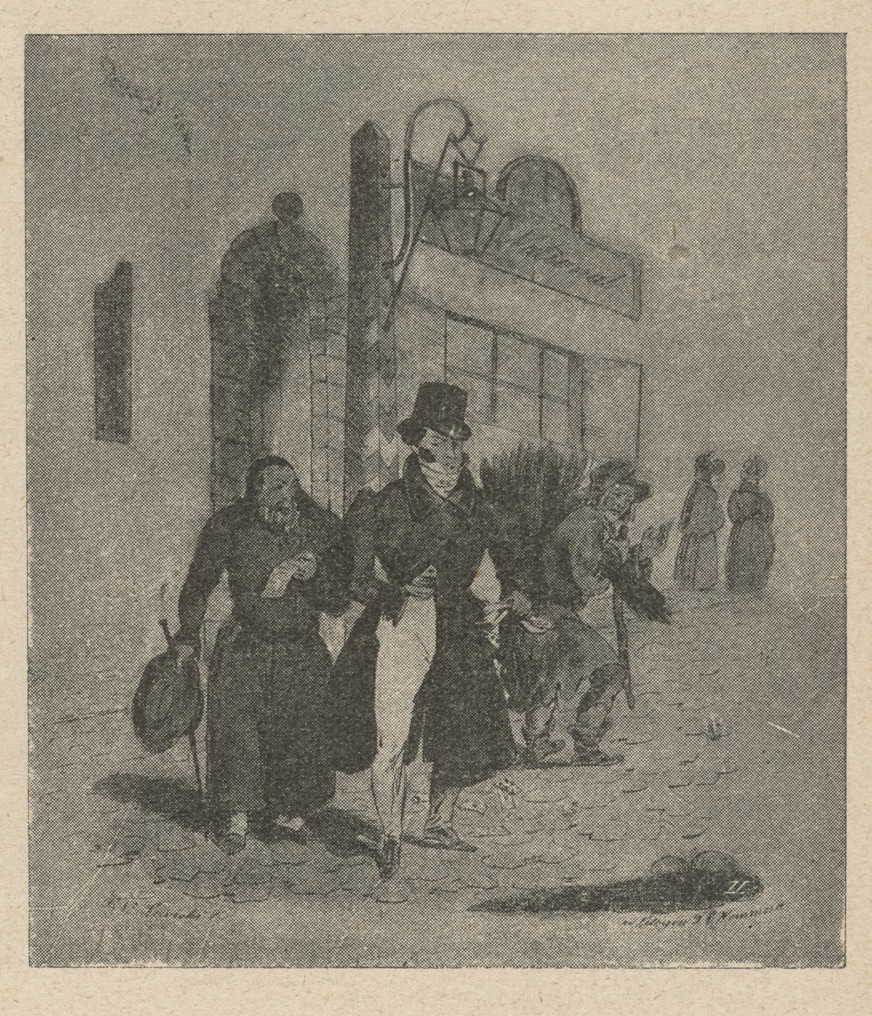

|
Jan Nepomucen Lewicki i początki polskiego fandomu. Pierwsza rozbudowana adaptacja dzieła literatury polskiej na komiks - jeden z rozdziałów książki "Rozmaite gatunki szarańczy" Rozdział dotyczący J.N. Lewickiego - czytaj (pdf) Fragment rozdziału/ An excerpt from the chapter: Komiksowy fandom wśród warszawskich ulicPodczas
seansu „Dantona” (1982) Andrzeja Wajdy (1926-2016), reinterpretującego
dramat Stanisławy Przybyszewskiej (1901-1935) warto obserwować drugi
i trzeci plan. Kiedy spiskowcy wchodzą do Konstytuanty – przez
chwilę – widzimy dwie kobiety. Jedna z nich przypina, zamiast kwiatów,
trójkolorowe kotyliony i niczym kwiaciarka w nocnym lokalu oczekuje
na drobny datek. Druga rozwiesza – niczym pranie na sznurku –
karykatury przeciwników politycznych, a być może również
niewielkie gazetki. Chociaż te dwie kobiety mówią nam wiele o społecznej
kondycji i biedzie okresu rewolucji, gdy zajętych ścinaniem głów i
niekończącym pisaniem memoriałów zastąpić musiały w pracy
zarobkowej kobiety, to interesować nas będzie druga z nich. Dlaczego
jednak zwrócić powinniśmy uwagę na owo „papierowe pranie”.
Francuska rewolucja i parlamentarna walka w Anglii (oba zjawiska
dotyczą wszak jesieni oświecenia) posługiwały się drukiem ulotnym
– niewielkim komunikatem, krótkim artykulikiem, a nade wszystko
rysunkiem: satyryczną scenką lub karykaturą. Z biegiem lat i w
czasach spokojniejszych ten rysowane scenki zaczęły przybierać formę
pocztówek, drukowano je w cyklach, stały się obiektem
zainteresowania tych „niewidzialnych” (służba, uliczni
sprzedawcy, czy wykonawcy usług niezbędnych, lecz uważanych za
„brudne”) oraz zapobiegliwych kolekcjonerów. Ten patent – rodem
z francuskich i angielskich ulic – wprowadził w Polsce, na długo
przed wyjazdem na dwór Goździkowego Króla, właśnie Jan Nepomucen
Lewicki. Rysownik, znany przede wszystkim jako autor adaptacji Paska, jest również autorem krótkiej – składającej się tylko z dwunastu rycin – książki ilustrowanej „Pierwszy tuzin starych facecji, komedia w Sochaczewie”, wydanej w 1853 r. w Paryżu nakładem Drouarta. To – z zachowanie odpowiednich proporcji – graficzna wersja „szlifowania paryskiego bruku” ... Comic book fandom among Warsaw streets During the screening of "Danton" (1982) by Andrzej Wajda (1926-2016), who reinterprets the drama of Stanisława Przybyszewska (1901-1935), it is worth observing the second and third planes. When the conspirators enter the Constituent Assembly - for a moment - we see two women. One of them is pinning, instead of flowers, three-color cotillos and, like a florist in a nightclub, waiting for a small donation. The second hangs up - like washing clothes on a string - caricatures of political opponents, and perhaps also small newspapers. Although these two women tell us a lot about the social condition and poverty of the revolution period, when they had to replace women in their work of beheading and endlessly writing memorials, the latter will be of interest to us. Why, however, we should pay attention to this "paper washing". The French revolution and parliamentary struggle in England (both phenomena concern the fall of the Enlightenment) used fleeting print - a small message, a short article, and above all a drawing: a satirical scene or a caricature. Over the years, and in calmer times, these drawn scenes began to take the form of postcards, they were printed in cycles, they became the object of interest of those "invisible" (servants, street vendors, or service providers of essential but considered "dirty" services) and thrifty collectors. This patent - a native of French and English streets - was introduced in Poland by Jan Nepomucen Lewicki, long before his departure to the King's court. the illustrated book "The first dozen old facies, a comedy in Sochaczew", published in 1853 in Paris by Drouart. It is - with the right proportions - a graphic version of "grinding the Parisian pavement" ...
|
Paweł Chmielewski "Various species of locusts. Illustrative cycles and comic book forms in the Polish press of the 19th
century"
The 1850s and 1860s marked the beginning of the "golden era" of the Polish nineteenth-century press comic book, when artists from Warsaw, Krakow, Poznań and Lviv created a modern model of the illustrated press, closely related to global trends, in which picture stories played one of the most important roles. and drawing cycles accompanying the masterpieces of Polish literature. The source of inspiration - for publishers and graphic designers - was the English, French, and finally German press, which for over twenty years has been shaping the image of world comics. Polish authors (journalists and printers) not only subscribed to the Western press, but while visiting Paris, London and Amsterdam, around 1830, they started building a press market, in which drawing plays an increasingly important role, looking for sources of inspiration also in illustrative cycles and picture books , published on the Vistula from the end of the Enlightenment. "Rozmaite genres ..." is a story about inspirations, the emergence of the first press publications, about more or less famous artists (the achievements of several dozen are presented in the publication), publishers and the rise and fall of the first press empires, development magazines illustrated and published in a small number, the first comic book albums, about problems with censorship, readers' reactions, relations between small drawings and literature, and attempts to theoretically describe comics in Polish criticism. This book contains descriptions of the first comic-book gadgets, creating the formal and technical foundations that the Polish comic book community for the next century uses, all with reference to the social, cultural and economic changes of 19th-century Poland. |
"PROJEKTOR" - kielecki magazyn kulturalny
Paweł Chmielewski (redaktor
naczelny)
Wydawca: Stowarzyszenie Twórcze "Zenit", ul. Zbożowa 4 lok.
11, 25-416 Kielce www.zenit.org.pl
Kontakt: projektorkielce[at]onet.eu lub
605 343 341
Copyright by Stowarzyszenie Twórcze "Zenit".
Kopiowanie treści bez zezwolenia wydawcy jest naruszeniem ustawy o prawach autorskich.

